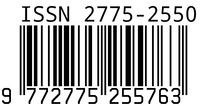Teaching Islamic Religious Education for Children with Special Needs in Elementary School
DOI:
https://doi.org/10.51773/ajrs.v1i2.84Keywords:
children with special needs, education, islamicAbstract
This study aims to describe the method of teaching Islamic religious education for children with special needs in Elementary School, and its impact from the perspective of the parents. The research used a qualitative approach. The research subjects consisted of the principal, Islamic religious education teacher, accompanying teachers, and parents of children with special needs. The data were collected by using observation, interview, and documentation and were analyzed by using an interactive technique of Miles and Huberman. To test the validity of the data, the researchers used the method of triangulation technique. The results showed that the method used in the teaching of Islamic religious education in the Elementary School is elective method that combines conventional, cooperative, and contextual methods. From the perspective of the parents, teaching Islamic religious education for children with special needs has positive impacts in developing their understanding of teachings of Islamic religion and forming positive behaviour in their life.
Downloads
Published
How to Cite
Issue
Section
License
Copyright (c) 2021 Abdul Haris, Cory Cahyadi

This work is licensed under a Creative Commons Attribution-NonCommercial 4.0 International License.







